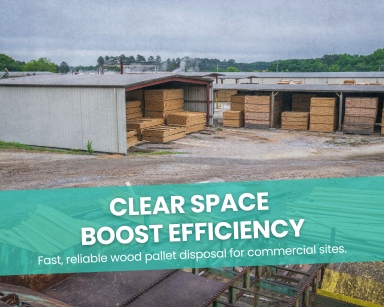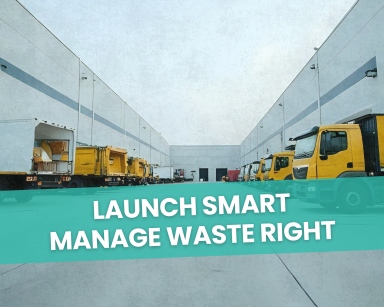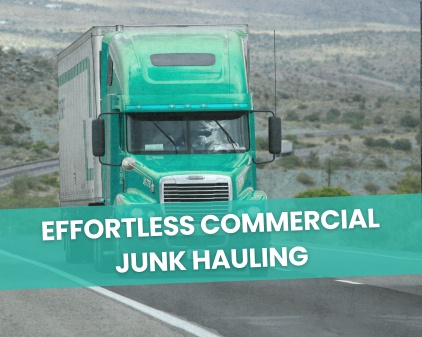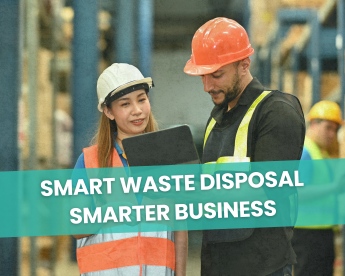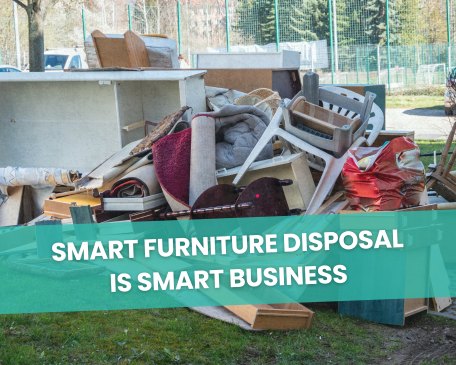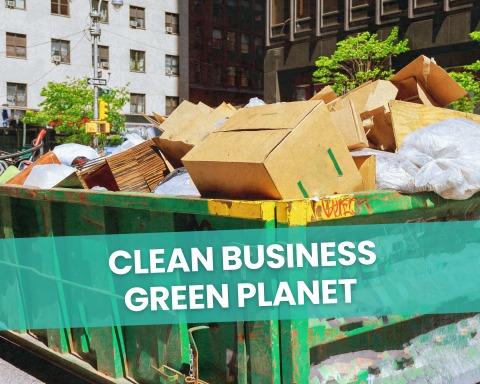Classification of hazardous materials and what is needed for their safe disposal?
Table of Contents
Understanding Hazardous Waste Classification and Its Impact on Sustainable Waste Management
The Importance of Hazardous Waste Classification
Classification of hazardous waste is crucial for several reasons:
- Identifying the potential risks and hazards associated with each type of waste material. It helps to identify the correct disposal route and safety measures.
- Determining the most suitable handling, storage, and disposal methods for different classes of substances. This is especially important when dealing with large materials.
- Ensuring compliance with local, national, and international regulations for hazardous waste management. When it’s not properly classified and managed, it can lead to a significant risk of harm to human health, wildlife, and the environment.
The Variation in Recycling Across Several Classes
Each section requires specific disposal techniques to minimize risks and environmental impact. Understanding these differences is essential for implementing sustainable management practices. It can not only help to reduce costs associated with disposal but also ensure compliance with regulations.
Organic and peroxid explosives are two of the most common hazardous waste classes. Organic explosives, such as nitroglycerin, trinitrotoluene (TNT), and dynamite, are extremely volatile and require specialized handling. Peroxid explosives, such as Hydrogen Peroxide, Potassium Chlorate, and Sodium Chlorate, are also highly unpredictable explosive and need to be carefully managed.
The Nine Classes of Hazardous Waste
- Class 1 – Explosives: This class includes explosive materials such as dynamite, fireworks, and blasting caps. Safe disposal of Class 1 requires strict guidelines, including the use of specialized containers and trained professionals to transport and neutralize these substances.
- Class 2 – Gases: Gases, like flammable, toxic, or corrosive gases, belong to this section. Proper storage and disposal of Class 2 hazardous waste involve specific methods to minimize hazards, including using professional services for safe containment and treatment.
- Class 3 – Flammable Liquids: Gasoline and solvents are examples of Class 3 flammable Liquids. These flammable liquids should be stored in approved containers and designated storage areas. Disposal methods for Class 3 – Flammable Liquids include recycling, incineration, or using disposal facilities that follow stringent regulations.
- Class 4 – Flammable Solids: Flammable solids such as magnesium, sodium, and certain types of plastics are classified as Class 4. To dispose of Class 4 materials safely, it is crucial to follow appropriate guidelines and utilize professional disposal services to minimize environmental risks related to flammable solids.
- Class 5 – Oxidizing Substances and Organic Peroxides: Oxidizing substances like chlorine and organic peroxides, such as benzoyl peroxide, are classified as Class 5 hazardous materials. Proper disposal of Class 5 involves treating them with specific chemicals or using specialized management facilities.
- Class 6 – Toxic or Infectious Substances: Toxic substances, such as pesticides, and infectious substances, like medical waste, are examples of Class 6 materials. Proper handling of Class 6 involves wearing protective equipment and using specialized containers. Disposal methods include incineration, chemical treatment, and utilizing certified management services.
- Class 7 – Radioactive Materials: Radioactive substances, like uranium and plutonium, are classified as Class 7 hazardous materials. Just like flammable materials, proper disposal of Class 7 is crucial due to their potential health risks and environmental impact. Disposal methods typically involve containment in shielded containers and secure storage in designated facilities, which are closely monitored and regulated.
- Class 8 – Corrosive Materials: Corrosive materials, such as acids and alkaline substances, belong to Class 8 waste. Proper disposal of Class 8 materials involves neutralizing the substance with appropriate chemicals or using specialized management services for safe handling and treatment.
- Class 9 – Miscellaneous Hazardous Waste: Class 9 materials encompass substances that don’t fit neatly into the other eight classes. Examples of Class 9 include asbestos, lithium batteries, and dry ice. These materials require specific handling and disposal techniques to ensure safety and minimize environmental impact.
Remember, flammable liquids, corrosive, and toxic materials all require specialized treatment to ensure safe handling.
Specialized Disposal Techniques for Class 9 Hazardous Waste
Each Class 9 material has unique disposal requirements. For instance, asbestos should be encapsulated and disposed of in designated landfills, while lithium batteries require specialized recycling facilities to manage their components.
For solid and liquid substances, specialized treatment techniques include incineration to reduce the material’s toxicity and volume. Also, these solid and liquid substances may be segregated and treated with chemicals to make them safe for disposal in municipal landfills.
Oxidizer is also a hazard that requires special handling and disposal. Chemical neutralization is the preferred method for safely disposing of an oxidizer, as it renders it non-reactive. The hazard of oxidizers is that they can cause combustion when in contact with other substances.
Compliance with Local, National, and International Regulations
It’s essential for businesses and individuals to comply with all applicable hazardous waste management regulations at local, national, and international levels. Failure to do so can result in penalties, fines, and environmental damage. By understanding the classification of each type, proper handling and disposal can be ensured, minimizing potential hazards.
The Importance of Professional Waste Management Services
Partnering with a professional management service ensures the proper classification, handling, and disposal of all classes of hazardous waste. These services are knowledgeable about regulations and can help guide businesses in making environmentally responsible decisions.
Our Company’s Role in Hazardous Waste Disposal
Our company specializes in the safe and compliant disposal of all classes of hazardous waste. We offer:
- Expert classification and evaluation of waste materials.
- Customized solutions for handling, storage, and disposal of hazardous waste.
- Compliance assistance with local, national, and international regulations.
- Partnership with certified and specialized disposal facilities for each class of waste.
Environmental, Social, and Governance (ESG) Benefits of Sustainable Waste Management
- Protecting the Environment: Proper management of each class of hazardous waste is vital for preserving the environment. By following correct disposal practices, we can reduce the risk of soil, water, and air contamination, ultimately protecting ecosystems and promoting a healthier planet.
- Ensuring Social Responsibility: Sustainable waste management practices demonstrate social responsibility by protecting public health and safety. Proper handling and disposal of hazardous waste, especially toxic, infectious, and radioactive materials, can help reduce the risk of exposure to harmful substances, thus safeguarding communities.
- Boosting ESG Performance: Adopting sustainable management practices for all classes can improve a company’s Environmental, Social, and Governance (ESG) performance. A strong ESG performance can attract investors, customers, and stakeholders who value responsible corporate behavior and long-term sustainability.
Practical Steps for Businesses and Individuals
- Develop a Hazardous Waste Management Plan: Identify the types of waste generated and classify them according to their potential hazards. Ensure proper storage and handling of these materials to minimize risks.
- Implement Proper Disposal Techniques: Each type requires specific disposal methods. Partner with professional management services to ensure proper disposal, recycling, or treatment of hazardous materials.
- Train Employees: Educate employees on the classification and hazards. Provide training on proper handling, storage, and disposal techniques to prevent accidents and minimize risks.
- Monitor and Evaluate: Regularly review your management practices to ensure compliance with regulations and to identify opportunities for improvement.
Compliance with EPA and RCRA Regulations
The Environmental Protection Agency (EPA) and the Resource Conservation and Recovery Act (RCRA) are key regulatory bodies in the United States that set standards and guidelines for hazardous waste management. The EPA enforces environmental laws to protect human health and the environment, while the RCRA specifically focuses on the proper management of hazardous and non-hazardous solid waste.
Both the EPA and RCRA establish criteria for classification, storage, transportation, and disposal. Compliance with these regulations is not only essential for environmental protection and public safety, but also for avoiding penalties and fines that can result from non-compliance.
Our company ensures compliance with EPA and RCRA regulations by providing:
- Assistance in identifying and classifying hazardous waste according to EPA and RCRA criteria.
- Guidance on proper storage, handling, and transportation of hazardous waste in compliance with EPA and RCRA requirements.
- Access to EPA and RCRA-approved disposal facilities for safe and compliant disposal of all classes of hazardous waste.
Save Up to 50% on Waste Costs
Our company’s expertise in hazardous waste management can help clients save up to 50% on waste costs. By partnering with us, clients can benefit from:
- Customized waste management solutions: We work closely with clients to develop tailored management strategies that optimize efficiency and minimize generation.
- Resource recovery and recycling: We identify opportunities for recycling and resource recovery, helping clients reduce disposal costs and minimize their environmental impact.
- Compliance cost savings: Our in-depth knowledge of EPA and RCRA regulations enables clients to avoid costly fines and penalties associated with non-compliance, as well as potential reputational damage.
- Streamlined waste management processes: By simplifying and consolidating waste management processes, clients can reduce overhead costs and improve operational efficiency.
Conclusion
Understanding the classification of hazardous waste and adopting proper disposal practices for each class are crucial steps in ensuring sustainable waste management. By complying with regulations and utilizing professional management services, businesses can minimize environmental risks, promote public health, and enhance their ESG performance. As a reliable partner, our company is dedicated to helping businesses and individuals navigate the complexities of management and contribute to a safer and more sustainable world.


